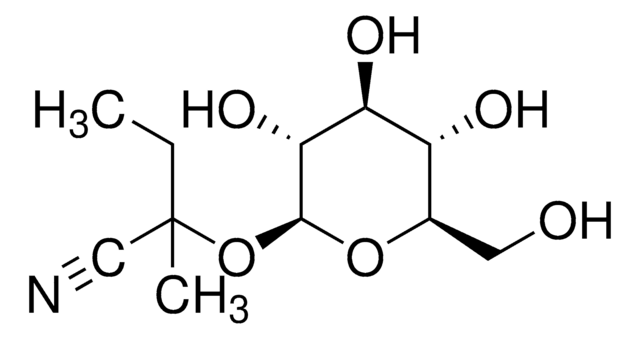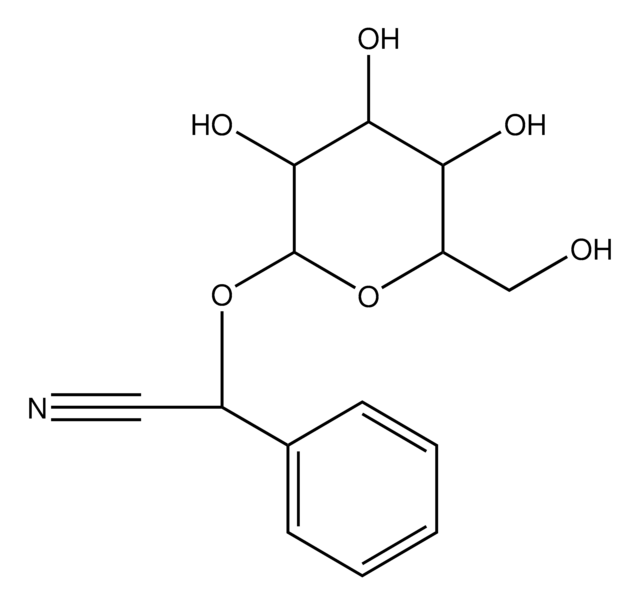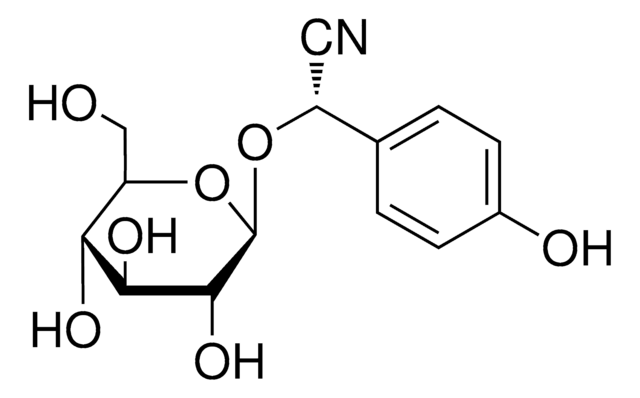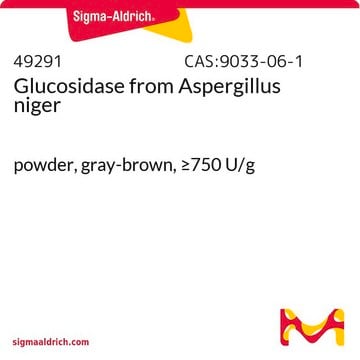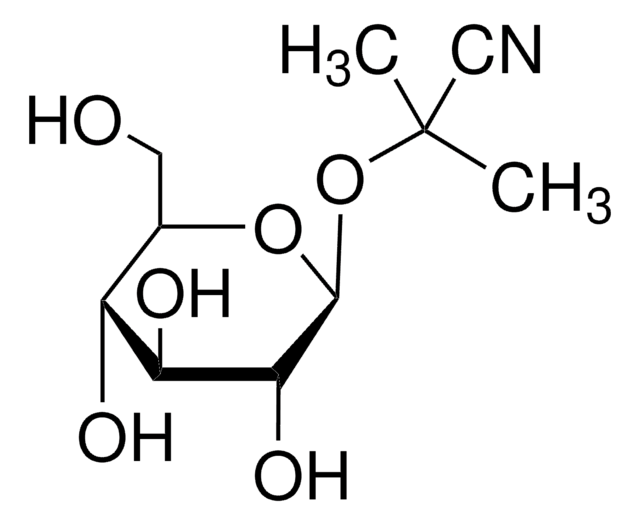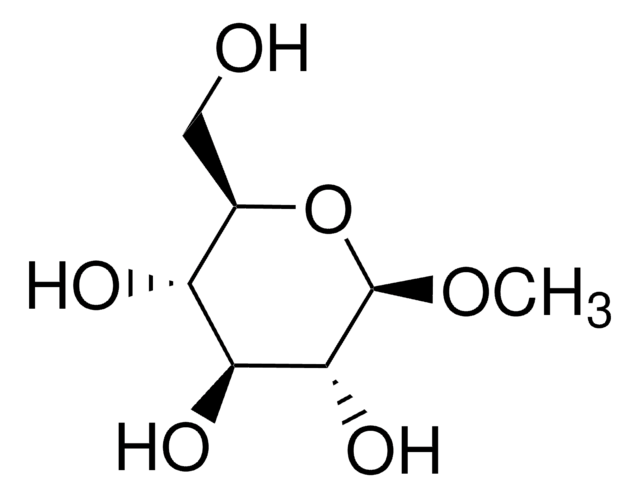68264
α-Hydroxyisobutyronitrile β-D-glucopyranoside
≥97% (HPLC)
Synonym(s):
α-Hydroxyisobutyronitrile β-D-glucose, 2-(β-D-Glucopyranosyloxy)-2-methylpropionitrile, Linamarin
Select a Size
About This Item
Recommended Products
biological source
synthetic
Assay
≥97% (HPLC)
form
solid
optical activity
[α]/D -26.5±2.0°, c = 1 in H2O
technique(s)
HPLC: suitable
color
white to off-white
storage temp.
2-8°C
SMILES string
CC(C)(O[C@@H]1O[C@H](CO)[C@@H](O)[C@H](O)[C@H]1O)C#N
InChI
1S/C10H17NO6/c1-10(2,4-11)17-9-8(15)7(14)6(13)5(3-12)16-9/h5-9,12-15H,3H2,1-2H3/t5-,6-,7+,8-,9+/m1/s1
InChI key
QLTCHMYAEJEXBT-ZEBDFXRSSA-N
Looking for similar products? Visit Product Comparison Guide
1 of 4
This Item | 10050 | M0779 | G9662 |
|---|---|---|---|
| biological source synthetic | biological source synthetic | biological source - | biological source synthetic |
| assay ≥97% (HPLC) | assay ≥97.0% (HPLC) | assay ≥99% (HPLC and GC) | assay ≥90% |
| Quality Level 100 | Quality Level 200 | Quality Level 200 | Quality Level 200 |
| form solid | form powder | form powder | form powder or solid |
| storage temp. 2-8°C | storage temp. - | storage temp. - | storage temp. 2-8°C |
Application
Biochem/physiol Actions
Packaging
Other Notes
Signal Word
Warning
Hazard Statements
Precautionary Statements
Hazard Classifications
Acute Tox. 4 Oral - Eye Irrit. 2 - Skin Irrit. 2 - STOT SE 3
Target Organs
Respiratory system
Storage Class Code
11 - Combustible Solids
WGK
WGK 3
Flash Point(F)
Not applicable
Flash Point(C)
Not applicable
Personal Protective Equipment
Choose from one of the most recent versions:
Already Own This Product?
Find documentation for the products that you have recently purchased in the Document Library.
Active Filters
Our team of scientists has experience in all areas of research including Life Science, Material Science, Chemical Synthesis, Chromatography, Analytical and many others.
Contact Technical Service